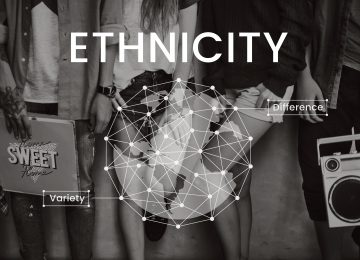At Laos Wire, we believe language is more than words. It is culture in motion, a reflection of society’s heartbeat, and a powerful marker of generational identity. Slang and cultural terms are never static; they evolve with every season, every viral trend, and every cultural shift. These words are playful, powerful, and sometimes even confusing for those who are not in the loop, but they always tell a story about who we are and how we connect.
From catchy Gen Z phrases dominating TikTok to revived retro slang making a comeback in digital conversations, the world of trendy slang and cultural terms is an exciting territory. It is not just about funny words or inside jokes, it is about building identity, expressing emotions, and shaping the way communities form in both online and offline spaces. Let’s explore this fascinating language landscape together and uncover how slang keeps us in tune with the pulse of society.
More Related: Platform-Specific & AI Features in Social Media Growth
The Rise of Slang in Digital Culture
Slang has always existed, but the digital era has supercharged its evolution. Unlike earlier decades where terms traveled slowly through television or music, slang today spreads instantly across platforms. A single meme, viral video, or celebrity tweet can transform an obscure word into a global phenomenon within days.
Social media platforms like TikTok, Instagram, and Twitter have become the launchpads for cultural terms. Hashtags, trending challenges, and short-form videos allow new slang to flourish at a pace never seen before. These words are not confined to the young; they ripple across demographics, influencing marketing campaigns, pop culture references, and even political speeches.
How Cultural Terms Reflect Society’s Mood
Language is a mirror of society, and trendy slang often captures the mood of a generation. When people feel optimistic, playful terms filled with humor dominate. During uncertain times, slang may lean toward sarcasm or irony, reflecting collective emotions.
For example, during global lockdowns, cultural terms like “quaranteam” or “doomscrolling” emerged, illustrating how language evolves to describe shared experiences. Today, phrases like “main character energy” highlight a shift toward self-expression, self-confidence, and personal empowerment.
The Role of Memes in Popularizing Slang
Memes have become the engines that fuel the spread of trendy slang. A single meme format can give life to phrases that would otherwise fade quickly. Because memes are visual, they amplify slang by pairing it with humor, making it more relatable and easier to adopt.
Take a slang word like “rizz.” On its own, it might seem obscure. But when memes showcase it with funny captions and relatable contexts, the word becomes part of everyday conversations. This symbiosis of memes and language has made digital humor one of the strongest cultural forces in shaping modern vocabulary.
Everyday Conversations: How Slang Bridges Generations
Although slang is often tied to youth culture, it is increasingly bridging generational divides. Parents adopt terms they hear from children, while older phrases like “cool” or “vibe” still persist in younger groups. This constant exchange makes slang a dynamic cultural connector.
Slang also breaks down barriers across communities. Global audiences can instantly learn and use terms from different cultures thanks to social platforms. What was once local slang can now become a worldwide cultural trend, enriching conversations and fostering inclusivity.
The Impact of Slang on Marketing and Branding
Brands and businesses have realized that understanding trendy slang is crucial to connecting with audiences. When companies use cultural terms effectively, they appear more authentic and relatable. However, misuse of slang can have the opposite effect, making them seem disconnected or out of touch.
Marketers today analyze platforms for emerging terms and integrate them into campaigns, product names, and slogans. For example, adopting the concept of “aesthetic” in lifestyle branding or referencing “glow up” in personal care promotions creates a sense of cultural alignment with consumers.
Global Influence: How Slang Travels Beyond Borders
Slang no longer respects national boundaries. Words and phrases coined in one part of the world can become universal almost overnight. Social platforms accelerate this exchange, making cultural terms global phenomena.
For instance, African American Vernacular English (AAVE) has heavily influenced global slang through music and online culture. Similarly, terms from K-pop fandoms, anime communities, and Latin music scenes have gained global traction, enriching the shared vocabulary of internet users worldwide.
A Look at Popular Trendy Slang in Use Today
To make this exploration practical, here’s a table highlighting a few popular slang terms, their meanings, and contexts:
| Slang Term | Meaning | Example Use Case |
| Rizz | Charm or ability to attract romantically | “He’s got serious rizz at the party.” |
| Delulu | Delusional but playful exaggeration | “Thinking I’ll marry a celebrity is delulu.” |
| Main Character | Feeling like the star of one’s own story | “Walking into the café with main character energy.” |
| Glow Up | Transformation in looks or lifestyle | “She had a huge glow up after college.” |
| Vibe Check | Assessing mood or authenticity of a situation | “That restaurant totally passed the vibe check.” |
How to Keep Up with Emerging Slang
Keeping up with slang can feel overwhelming, but it is possible with the right approach:
Observe Social Platforms
Platforms like TikTok and Instagram Reels are the fastest channels for spotting new terms. Watching trending videos provides context for how words are used.
Follow Creators and Communities
Influencers, comedians, and niche communities often introduce new phrases. Joining these conversations helps you stay ahead.
Ask and Learn
There is no shame in asking younger relatives, colleagues, or friends about terms you do not understand. In fact, this curiosity can spark fun intergenerational exchanges.
The Future of Slang and Cultural Terms
As technology advances, slang will continue to evolve at lightning speed. Artificial intelligence, virtual reality, and the metaverse are already generating new language to describe digital experiences. Terms like “NPC” from gaming culture have already crossed over into everyday slang.
Looking ahead, slang will increasingly blend technology, pop culture, and global influences. This fusion will continue to make language richer, more diverse, and more playful.
FAQs About Trendy Slang and Cultural Terms
What makes slang trendy?
Slang becomes trendy when it resonates with shared cultural experiences and spreads quickly through social platforms and memes.
Is slang only for young people?
No, while slang often starts with younger generations, it often spreads across age groups and becomes part of mainstream language.
Why do slang terms fade?
Slang fades when it loses relevance, becomes overused, or when new cultural terms replace it in popular conversations.
Can slang vary by region?
Yes, regional slang is common, but digital platforms often turn local expressions into global terms.
How can I use slang correctly?
Pay attention to context, learn how terms are used in real conversations, and avoid forcing slang into settings where it feels unnatural.
Conclusion
Trendy slang and cultural terms are more than passing fads; they are cultural markers that tell the story of our times. They shape identities, reflect emotions, and connect people across the globe. At Laos Wire, we see them as living evidence of society’s creativity, adaptability, and constant reinvention. By embracing and understanding slang, we are not only keeping up with language but also with the culture itself.









